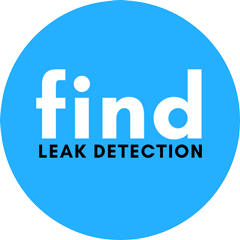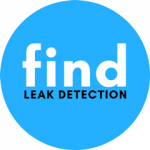Water causes billions of dollars in damage every year in Australia. Much of this is from leaks that go undetected.
Leaks can be difficult to identify and find. And most methods of doing so are crude, time-consuming, and cause further damage to your property.
This is where professional underground leak detection comes in. The article below goes over some of the most innovative methods available today for quickly finding and fixing leaks. These can go a long way to minimising disruption to the area and mitigating the potential for further damage.
Keep reading to find out how to identify underground leaks and address them. The information below lays out how leak detection technology can save you or your business a lot of time, effort, and money.
What Is Leak Detection?
Concealed leaks are, by definition, those that are not readily visible from aboveground. This makes them difficult to find and their severity and causes hard to determine.
Even slow leaks can cause significant damage to homes or businesses, if left unaddressed. They also can drive up your utility bills, especially over time. That is why, if you suspect the presence of an underground leak, you should not delay in addressing the problem.
Without the use of specialised equipment, the only way to find underground leaks is through trial and error. This might involve serious excavation or dismantling of your building’s infrastructure. Fortunately, there are alternatives.
Signs of Leaks
There are different strategies for doing underground leak detection. Before employing high-tech methods of examining lines and identifying problematic areas, there are a few things you can do to determine if you have a water leak.
A sudden increase in your water bill is a common one. You also may be able to hear the sound of running or dripping water, even when faucets are turned off throughout your home.
Another basic thing you can do to determine if there is a leak is to ensure no water is running in your house, then take a look at your water meter. Jot down the reading and examine it over time. If it is increasing, then you can be fairly certain that there is an active leak.
Finally, look for physical signs of a leak around your property. Beyond the accumulation of water itself, this can include soggy areas of a lawn or irregular vegetative growth.
Another external sign of concealed water leaks includes abrupt mould or mildew growth on walls and ceilings. Cracks in cement, including in the infrastructure of your building, is another sign that a leak may be present.
If there are no visible signs of a problem, solving the issues will demand the use of specialised underground leak detection tools, as well as training. For this, you need to hire a qualified leak detection company with a lot of experience in the industry.
Professional Underground Leak Detection
Professional technicians use several distinct methods of identifying the precise location of an underground leak. Here are a few of the most common ones. (Note that technicians may use some combination of these methods, depending on the circumstances surrounding the leak.)
Acoustic Identification
Acoustic leak detection works by dispensing air slugs into the pipeline. These create noises that reverberate louder as they get closer to a leak. Technicians use special equipment to pinpoint compromised sections of pipe based on the acoustic readings.
One of the biggest advantages of this type of leak detection is that it does not require you to dig around the pipe. This minimises the potential of further damaging pipes or your building’s infrastructure. It also limits cleanup costs.
Besides specialised equipment, acoustic leak identification requires technical training. An experienced repair person will be able to use this method to give the most precise reading about the location of the leak and its severity.
Borescope Camera
Another effective way to detect leaks is with specialised video equipment running through the lines. A boroscope camera setup consists of an optical system, such as an infrared or fibre optic camera attached to a flexible mount.
Some cameras light to illuminate the inside of the pipe. Images of the inside of the pipe are transferred to a screen where they can be examined and the situation assessed.
One advantage of the borescope method is that it allows you to inspect areas of the pipe that would otherwise not be visible. This is useful for finding leaks, but also for identifying their causes. It allows technicians to view the condition of the pipe, including signs of corrosion, obstructions, or other issues.
Pressure Testing
Pressure testing for leaks uses tets the internal walls of the piping. It relies on special equipment to measure any drop in pressure in the interior of the pipe.
Timing elements give readings that convert duration into distance. This allows professionals to know exactly where the breakdown exists, based on a drop in pressure.
While this method does not allow you to get visual confirmation of a leak, such as with an infrared camera, it is minimally invasive and inexpensive to perform. It is a quick and easy way to confirm and find the location of the leak without the need for excavation.
Find Leak Detection Services Near You
Now that you understand the most prominent and effective methods of conducting underground leak detection, you can determine which is best for your situation. Remember, do not wait to investigate a potential leak. Doing so could end up costing you headaches and repair costs down the road.
At Find Leak Detection, we use the most cutting-edge technologies and expertise to pinpoint even the quietest, most remote leaks. Our methods are minimally invasive whenever possible, efficient, and guaranteed to limit property disruption and damage. Reach out to us today to learn more or to schedule service.


